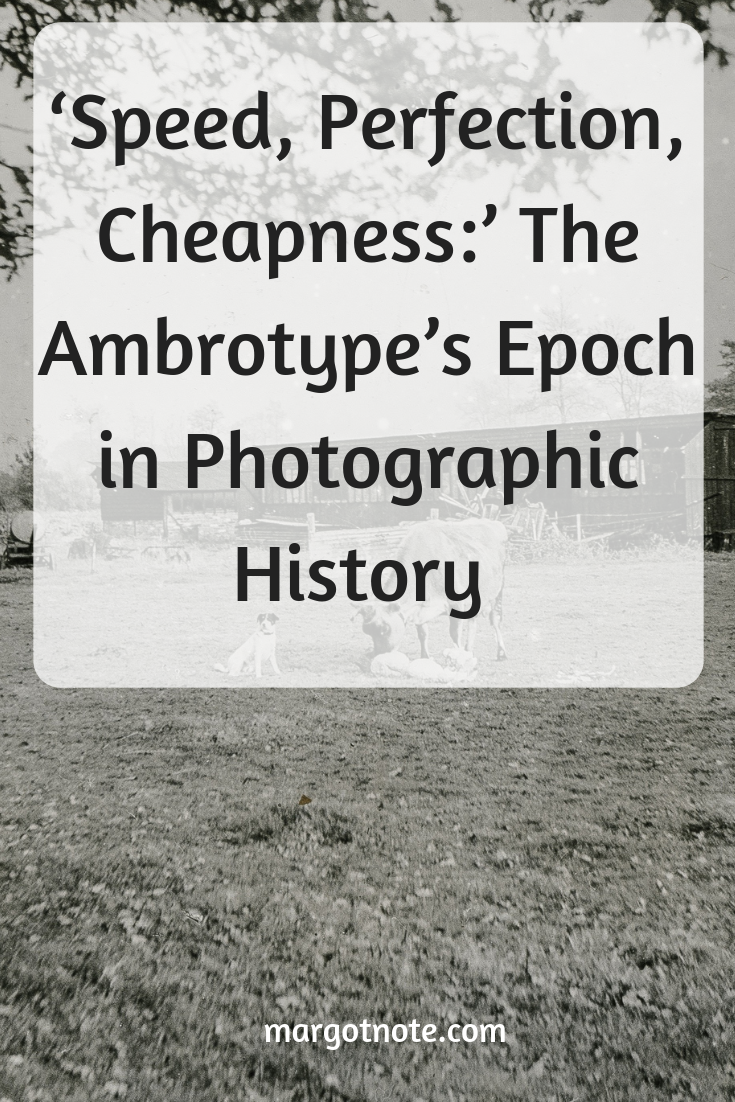I presented this paper at PhotoHistory XV, the 15th Symposium on the History of Photography, on October 21-23, 2011. These symposia are organized by The Photographic Historical Society, the oldest such organization in the world, founded in 1966. During the conference, historians, collectors, photo experts, and dealers from around the world meet at the George Eastman House, the International Museum of Photography & Film in Rochester, New York.
Mathew Brady’s 1856 New York Times advertisement declared, “As the magnetic telegraph is to the mail coach in the transmission of intelligence, so is the Ambrotype to the old process of portraiting,” as the method exemplified “speed, perfection, cheapness, three ideas which are peculiarly the characteristics of the modern age.”
Ambrotypes, derived from the Greek word for imperishable, were underexposed or bleached collodion negatives that, when viewed on dark backgrounds, appeared as positive images. Presented in sizes and cases analogous to daguerreotypes, ambrotypes were less expensive than this earlier process and, correspondingly, integral in expanding photography’s commercialism. As ambrotypes required little skill and small investment, even the poor could afford to have their visage memorialized—a remarkable achievement for a nascent technology.
However, ambrotypes had a depreciated value in their apogee, as some photographers believed the technique lacked the crisp contrast of daguerreotypes. Reflecting the sentiments of some of his contemporaries, photographer J.H. Fitzgibbon wrote in 1861 that ambrotypes were a “black cloud,” with “ghastly, dead, inanimate, flat…shadows” that “must in time die out without any other exertion than their own selves.” The ambrotype’s popularity with itinerant photographers, rather than plushly appointed daguerreotypists, may have also contributed to its downmarket connotation.
Disparagement against collodion positives has continued within contemporary photographic history surveys that treat ambrotypes with short shrift. Although their zenith was brief, lasting from the mid-1850s when they superseded daguerreotypes to the mid-1860s when tintypes and other processes supplanted them, ambrotypes served a salient role in democratizing photography for enamored Victorians.
This presentation examines the ambrotype’s history and evolution, patent and trademark controversies, and cultural responses, conceding the ambrotype’s rightful place in photographic history as the first commercially viable means to document the world.











